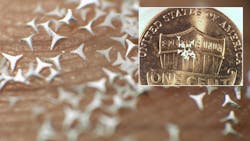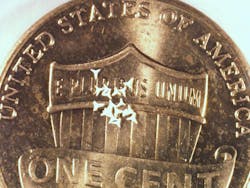Microscopic Stars Improve Drug Delivery for Skin Creams
Skin diseases affect half of the world’s population, but many treatments are not effective, require frequent injections or cause significant side effects. A new skin therapy developed at the Georgia Institute of Technology could help address those issues. Using a skin cream infused with microscopic STAR particles and a therapeutic drug, the technique could facilitate better treatment of skin diseases including psoriasis, warts and certain types of skin cancer.
To the naked eye, STAR particles look like a powder, but closer inspection reveals tiny microneedle projections sticking out from the particles like a microscopic star. A STAR particle-containing cream could improve treatment of skin diseases while eliminating injections, reducing side effects and increasing the drug’s effectiveness.
In a test of the particles, skin cancer tumors in mice were treated with 5-fluorouracil, a cancer therapy drug that limits replication of abnormal cells. Tumor growth was inhibited only when the drug was rubbed on the skin above the tumor along with STAR particles, while the drug without STAR particles was much less effective.
STAR particles are mixed into a therapeutic cream or gel and applied to the skin, painlessly making holes (micropores) in the skin surface that dramatically (albeit temporarily) increase the permeability to drugs of that area.
Most drugs are not absorbed well into skin, so often a drug needs to be given to the whole body by pill or injection just to treat the skin. Exposing the whole body to dermatological drugs often leads to unwanted side effects such as nausea or, more seriously, organ damage. Fortunately, the outside barrier layer of skin (the stratum corneum) is thinner than the width of a human hair. STAR particles are large enough to poke through this barrier layer when rubbed on the skin and let drugs enter the body through the micropores without pain.
More effectively delivering medicine directly to where it’s needed could improve treatments for patients dealing with many kinds of skin diseases. For example, oral methotrexate is a common course of treatment for psoriasis, a dermatological condition in which skin cells build up to form scales and itchy, dry patches. But because the patient’s entire body is exposed to the oral dose, it can cause serious side effects such as diarrhea, hair loss and liver problems.
Non-medicinal creams infused with STAR particles have been tested on humans, who generally reported experiencing a mild and comfortable tingling sensation, but no pain or skin irritation.
Each STAR particle is no larger than a millimeter, with sharp and strong microneedle structures protruding from the surface that are 100 to 300 microns long. The research team uses a laser to make the particles from ceramic materials like titanium dioxide, a common ingredient in sunscreens and other cosmetic products.
The team hopes to scale the STAR particles for commercial use in dermatology, as well as cosmetic purposes where they could deliver anti-aging treatments without injections or other harsh procedures.


